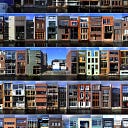Hi Phil. My investigations of Tokyo show that the inner Tokyo prefecture built environment increased by nearly 300% since 1963, that Tokyo residents increased their personal residential space from 15sqm to 32sqm and the population of Tokyo prefecture went from 10m to13.3m. This explodes the myth that intensification of inner city environments comes at the expense of a reduction in personal space.
I don’t think this tripling of the built environment only came from housing provided by Tokyo’s impressive private transit companies. Although that may well be one of many effective intensification mechanisms.
Other mechanisms might be that Tokyo has never had car parking minimum rules, or allowed residents the free use of car parking on public roads. Effectively Tokyo has created a private market for car parking space. There is not the nonsense of land being expensive for housing but free for parking.
Tokyo and Japan in general has a very impressive liberal zoning laws wrt intensification and a culture which supports building new rather than retaining the old. This allows incremental organic growth by many, many small property owners, which prevents localised land banking cartels from forming.
I will concede that even for Tokyo the city has built out as well as up. Around Tokyo prefecture there are 3 or 4 other prefectures which combined have a population of about 25m. So the ability for the city to build out almost certainly provides some competitive downward pressure on land prices.
Looking forward Phil, new technology is decreasing the frictional cost of transport. Potentially it will allow cities to be much more productive and space efficient if land-use laws allow it. I think David Schleicher best captures this opportunity.
